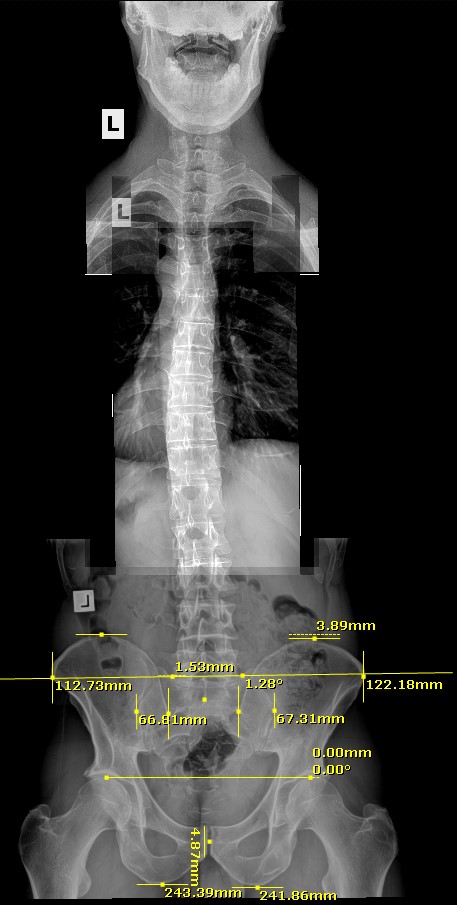The use of x-ray in Gonstead Chiropractic
Ideal Gonstead Chiropractic management involves very precise identification and correction of the subluxation (joint dysfunction), and x-ray is part of this process.
The Gonstead Chiropractic system of analysis has 6 main steps that help identify the nature of the spinal problem – the last of these steps is xray. We estimate the findings of x-rays changes the level and type of adjustment given in over 75% of people we see. This is remarkable as without xrays patients would be getting the wrong type of care in 3 out of 4 people, thus affecting their results!

The x-rays used in Gonstead Chiropractic are done in the standing, weight bearing position, allowing us to assess the body in it’s natural position.
X-ray is useful for several reasons, but will not be required in babies, children and pregnant women. Criteria for taking x-rays, and other exclusion criteria also exist, and lowest x-ray dose, and benefit/risk ratio are also taken into account. These concepts should be understood and taken in context when reading the following information.
Despite this the results of x-rays often affect clinical management and therefore the results that a practice member will get, and skipping this part of the process may result in less than ideal care.
It is generally accepted that radiographs should be requested based on sound clinical judgment, and the results of the radiographs will have an influence on patient management.
The first benefit to taking x-rays is the identification of pathology (disease states). There are many different examples of different pathologies affecting the spine.
These pathologies include:
- degeneration (degenerative joint disease) of the spine
- other arthritic conditions
- ankylosing spondylitis
- spondylolisthesis.
- infection
- tumours
- degeneration (degenerative joint disease) of the hips
- trauma, including fracture
- instability.
Other reasons x-rays are taken is to identify developmental problems. These  include issues such as….
include issues such as….
- scoliosis (a side bending curve of the spine, resulting in asymmetrical posture)
- kyphosis (a forward to back bend of the spine, resulting in slumped posture)
- early spinal joint degeneration.
- to assess cervical, thoracic, lumbar curves.
The next reason for us to take x-rays is biomechanical analysis. This is an assessment of the way each joint is positioned – essentially the alignment of individual and group of spinal segments. This type of analysis is often not understood by most practitioners outside of Chiropractic, and is a specific skill that Gonstead Chiropractors have, when thoroughly trained. In this analysis the Chiropractor is looking for normal alignment or abnormal alignment, and this analysis is part of the whole picture. Using all the information gathered the Gonstead Chiropractor is able to form a more complete understanding of the problem, and the corrective steps to take.
Furthermore, x-rays can helps confirm the diagnosis, affect the type of care given, and may help identify contra-indications to certain types of adjustments.




